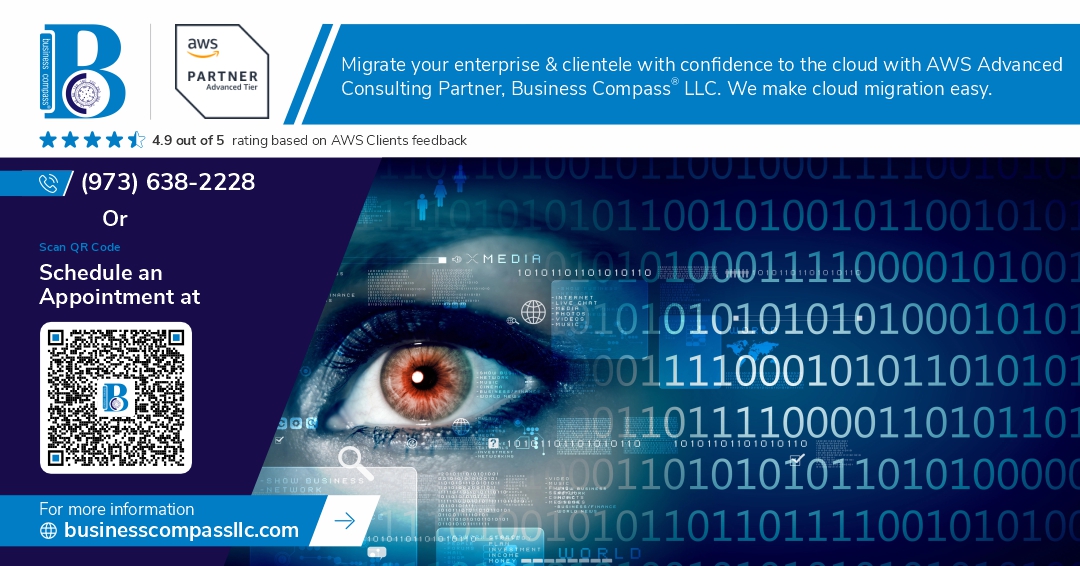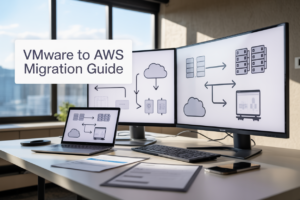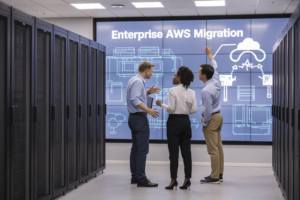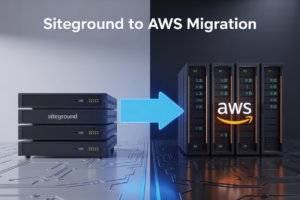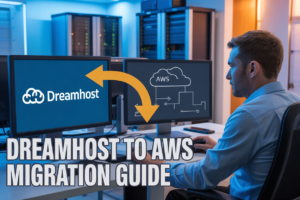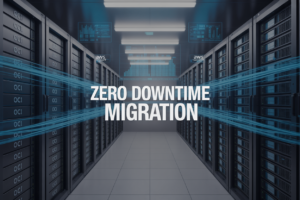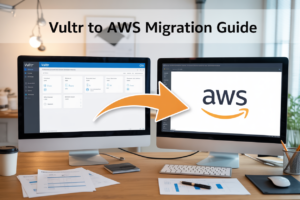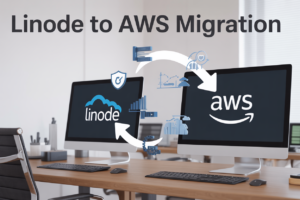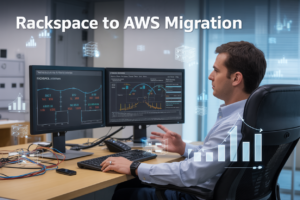Have you ever found yourself staring at your computer screen, scratching your head as your AWS compute services refuse to cooperate? You’re not alone. From EC2 instances acting up to Lambda functions misbehaving, the world of AWS compute can be a minefield of frustration. But fear not, intrepid developer! 💪
In this comprehensive guide, we’ll dive deep into the murky waters of AWS compute troubleshooting. We’ll explore common issues plaguing EC2, Lambda, Fargate, ECS, and EKS, and arm you with the knowledge to conquer them. Whether you’re battling performance bottlenecks or wrestling with cross-service integration headaches, we’ve got you covered. Get ready to transform from an AWS novice to a troubleshooting pro as we unravel the mysteries of compute service challenges and reveal expert strategies for smooth sailing in the cloud. ⛵
Understanding EC2 Issues
A. Connectivity problems and solutions
When troubleshooting EC2 connectivity issues, start by checking the following:
- Security Group configuration
- Network ACLs
- VPC routing tables
- Elastic IP associations
- Instance status checks
Common solutions include updating security group rules, verifying network ACL permissions, and ensuring proper VPC configuration. Here’s a quick reference table for common connectivity issues and their solutions:
| Issue | Possible Solution |
|---|---|
| Cannot SSH | Check inbound rules for port 22 |
| Web server unreachable | Verify HTTP/HTTPS ports (80/443) are open |
| Application timeout | Review outbound rules and NAT gateway configuration |
| Cross-VPC communication failure | Check VPC peering or Transit Gateway setup |
B. Performance bottlenecks
Performance issues in EC2 instances often stem from resource constraints. Key areas to investigate include:
- CPU utilization
- Memory usage
- Disk I/O
- Network throughput
Use CloudWatch metrics to identify bottlenecks and consider:
- Upgrading instance type
- Optimizing application code
- Implementing caching mechanisms
- Utilizing EBS-optimized instances for improved storage performance
C. Instance launch failures
When EC2 instances fail to launch, common culprits include:
- Insufficient capacity in the chosen Availability Zone
- Exceeded vCPU limits
- AMI issues
- Incorrect instance configuration
To resolve launch failures:
- Check service health dashboard for capacity issues
- Review and increase service quotas if necessary
- Verify AMI availability and permissions
- Double-check instance type compatibility with the chosen AMI
D. Storage-related issues
EBS volumes can experience performance degradation or availability issues. Address these by:
- Monitoring volume status and performance metrics
- Checking for “io1” volume burst balance exhaustion
- Verifying proper RAID configuration for multi-volume setups
- Considering the use of instance store volumes for temporary, high-performance storage needs
Now that we’ve covered EC2 issues, let’s move on to debugging Lambda functions, which present their own unique set of challenges in serverless architectures.
Debugging Lambda Functions
Cold start latency
Cold start latency is a common issue in Lambda functions, especially for infrequently used ones. To mitigate this:
- Use Provisioned Concurrency
- Optimize function size
- Choose the right runtime
| Mitigation Strategy | Description | Impact |
|---|---|---|
| Provisioned Concurrency | Pre-warms functions | Reduces latency, increases cost |
| Optimize function size | Minimize dependencies | Faster initialization |
| Choose right runtime | Use compiled languages | Faster startup times |
Timeouts and memory errors
Timeouts occur when functions exceed their execution limit, while memory errors happen when they exhaust allocated memory. To address these:
- Increase timeout and memory settings
- Optimize code efficiency
- Use asynchronous processing for long-running tasks
Permissions and role configurations
Incorrect IAM roles can lead to permission issues. Ensure:
- Proper IAM role assignment
- Least privilege principle
- Regular audits of permissions
Deployment and versioning challenges
Managing Lambda versions and aliases can be tricky. Best practices include:
- Use semantic versioning
- Implement blue-green deployments
- Utilize AWS SAM for easier management
Now that we’ve covered Lambda debugging, let’s explore common issues in Fargate, another crucial AWS compute service.
Fargate Troubleshooting
Task definition errors
When troubleshooting Fargate, task definition errors are a common stumbling block. These errors often occur due to misconfiguration or incompatibility issues. Here’s a list of common task definition errors and their solutions:
- Invalid container definitions
- Incorrect resource specifications
- Unsupported task size
- Missing or incorrect IAM roles
To resolve these issues, carefully review your task definition JSON file and ensure all parameters are correctly set.
Networking and connectivity issues
Networking problems can severely impact Fargate tasks. Common issues include:
- VPC configuration errors
- Security group misconfigurations
- Subnet connectivity problems
- NAT gateway issues
To troubleshoot, use AWS VPC Flow Logs and CloudWatch Logs to identify connectivity bottlenecks.
Resource allocation problems
Proper resource allocation is crucial for optimal Fargate performance. Consider the following aspects:
| Resource | Common Issues | Solution |
|---|---|---|
| CPU | Insufficient allocation | Increase CPU units in task definition |
| Memory | Out of memory errors | Allocate more memory or optimize container |
| Storage | Ephemeral storage exhaustion | Increase storage or use external volumes |
Container health checks
Container health checks ensure your Fargate tasks are running correctly. Implement robust health checks by:
- Defining appropriate health check commands
- Setting realistic timeout and interval values
- Configuring proper health check grace periods
Monitor container health using Amazon ECS Service metrics and CloudWatch alarms for proactive issue detection.
ECS Common Problems
A. Service discovery failures
Service discovery failures in Amazon ECS can lead to communication breakdowns between your services. Common causes include:
- Misconfigured DNS settings
- Incorrect service names
- Network connectivity issues
To troubleshoot, verify your DNS configuration and ensure service names are correct. Use AWS CloudWatch Logs to identify any network-related errors.
B. Task placement strategies
Optimizing task placement is crucial for efficient resource utilization. Consider these strategies:
- Binpack: Minimizes the number of instances in use
- Spread: Distributes tasks evenly across availability zones
- Random: Places tasks randomly on available instances
| Strategy | Pros | Cons |
|---|---|---|
| Binpack | Cost-effective | Potential single point of failure |
| Spread | High availability | May use more instances |
| Random | Simple implementation | Less predictable performance |
C. Load balancing issues
Load balancing problems can affect your application’s availability and performance. Common issues include:
- Incorrect target group configuration
- Health check failures
- Sticky session misconfiguration
Regularly monitor your load balancer metrics and review target group settings to ensure proper distribution of traffic.
D. Cluster capacity management
Effective cluster capacity management is essential for maintaining performance and controlling costs. Key considerations:
- Right-sizing instances
- Implementing auto-scaling
- Monitoring resource utilization
Use AWS CloudWatch to set up alarms for CPU and memory usage, triggering scaling actions when thresholds are exceeded.
Now that we’ve covered common ECS problems, let’s explore the challenges specific to Kubernetes with EKS.
EKS Challenges
Node group scaling problems
When managing an Amazon EKS cluster, node group scaling can be a significant challenge. Common issues include:
- Slow scaling response
- Incorrect scaling thresholds
- Resource constraints
To address these problems, consider the following solutions:
- Adjust the scaling cooldown periods
- Fine-tune the scaling policies
- Implement cluster autoscaler
| Issue | Solution |
|---|---|
| Slow scaling | Reduce cooldown periods |
| Incorrect thresholds | Adjust CPU/memory thresholds |
| Resource constraints | Increase node group capacity |
Pod scheduling issues
Pod scheduling problems can lead to application downtime and resource inefficiencies. Key challenges include:
- Pod pending states
- Resource quota exceeded
- Node affinity/anti-affinity conflicts
To resolve these issues:
- Review pod resource requests and limits
- Adjust namespace resource quotas
- Optimize node affinity rules
Networking and CNI troubles
Networking issues in EKS often stem from CNI (Container Network Interface) configuration problems. Common challenges include:
- IP address exhaustion
- DNS resolution failures
- Cross-node communication issues
To troubleshoot:
- Check CNI version compatibility
- Verify VPC and subnet configurations
- Analyze network policies
Control plane failures
EKS control plane issues can severely impact cluster operations. Key areas to monitor include:
- API server responsiveness
- etcd data consistency
- Scheduler performance
To mitigate control plane problems:
- Monitor control plane metrics
- Implement proper backup and restore procedures
- Use multi-AZ deployments for high availability
Add-on management
Managing EKS add-ons can be complex, with challenges such as:
- Version incompatibilities
- Resource conflicts
- Performance impact
To effectively manage add-ons:
- Regularly update add-ons to latest compatible versions
- Monitor add-on resource usage
- Use Helm charts for streamlined management
With these EKS challenges addressed, let’s explore cross-service debugging strategies to ensure smooth operations across your AWS compute services.
Cross-service Debugging Strategies
CloudWatch logs analysis
CloudWatch logs analysis is a powerful tool for cross-service debugging in AWS. It allows you to centralize logs from various compute services, making it easier to identify and troubleshoot issues across your infrastructure.
Key features of CloudWatch logs:
- Log aggregation
- Real-time monitoring
- Custom metrics and alarms
- Log retention and archiving
To effectively use CloudWatch logs for debugging:
- Enable logging for all relevant services
- Create log groups for each service
- Set up log streams for individual resources
- Use filter patterns to search for specific errors or events
| Service | Log Group Example | Common Log Events |
|---|---|---|
| EC2 | /aws/ec2/instance-id | System logs, application logs |
| Lambda | /aws/lambda/function-name | Invocation logs, custom logs |
| ECS | /ecs/cluster-name/service-name | Container logs, task definition logs |
| EKS | /aws/containerinsights/cluster-name/application | Pod logs, node logs |
X-Ray tracing for distributed systems
X-Ray provides end-to-end tracing for distributed applications, helping you visualize and analyze request flows across multiple AWS services. This is particularly useful when debugging complex architectures involving multiple compute services.
Benefits of X-Ray tracing:
- Visual representation of service dependencies
- Latency analysis for each service component
- Error tracking and root cause analysis
- Performance bottleneck identification
To implement X-Ray tracing:
- Install the X-Ray SDK in your applications
- Instrument your code to send trace data
- Configure sampling rules to control tracing volume
- Analyze trace maps and service graphs in the X-Ray console
Infrastructure as Code (IaC) validation
IaC validation is crucial for ensuring consistency and reliability across your AWS compute infrastructure. By validating your IaC templates, you can prevent misconfigurations and reduce the likelihood of issues in production.
Key IaC validation techniques:
- Static analysis tools (e.g., cfn-lint for CloudFormation)
- Unit testing for infrastructure code
- Integration testing with temporary environments
- Compliance checks using policy-as-code frameworks
| Validation Approach | Tools | Benefits |
|---|---|---|
| Static Analysis | cfn-lint, tflint | Catch syntax errors, best practice violations |
| Unit Testing | pytest, Go testing | Verify individual resource configurations |
| Integration Testing | Terratest, AWS SAM | Test infrastructure deployments in isolation |
| Compliance Checks | AWS Config Rules, Open Policy Agent | Enforce security and compliance policies |
By implementing these cross-service debugging strategies, you can significantly improve your ability to troubleshoot and resolve issues across various AWS compute services. Next, we’ll explore performance optimization techniques to further enhance your AWS infrastructure.
Performance Optimization Techniques
A. Right-sizing instances and containers
Right-sizing is crucial for optimizing performance and cost in AWS compute services. For EC2 instances, analyze CPU, memory, and network usage to determine the most suitable instance type. Use AWS Cost Explorer and Trusted Advisor for recommendations. For containers, monitor resource utilization and adjust CPU and memory allocations accordingly.
| Service | Right-sizing Approach |
|---|---|
| EC2 | Instance type selection based on workload |
| ECS/EKS | Container resource limits and requests |
| Lambda | Memory allocation and concurrent execution limits |
B. Autoscaling best practices
Implement autoscaling to handle varying workloads efficiently:
- Use target tracking scaling policies
- Set appropriate cooldown periods
- Leverage predictive scaling for EC2
- Implement application-aware scaling metrics
C. Caching strategies
Implement caching to reduce latency and improve performance:
- Use ElastiCache for in-memory caching
- Implement CloudFront for content delivery
- Leverage API Gateway caching for Lambda functions
- Use DynamoDB Accelerator (DAX) for database caching
D. Code profiling and optimization
Optimize your code to enhance performance:
- Use AWS X-Ray for distributed tracing
- Implement AWS CodeGuru for code reviews and profiling
- Optimize database queries and implement connection pooling
- Leverage asynchronous programming patterns
By applying these performance optimization techniques, you can significantly improve the efficiency and responsiveness of your AWS compute services. Next, we’ll explore cross-service debugging strategies to help you troubleshoot complex issues spanning multiple AWS services.
Navigating the complex world of AWS compute services requires a deep understanding of common issues and effective troubleshooting techniques. From EC2 instances to serverless Lambda functions, and from container orchestration with ECS and EKS to the flexibility of Fargate, each service presents unique challenges. By familiarizing yourself with these issues and implementing robust debugging strategies, you can ensure smooth operations and optimal performance across your AWS infrastructure.
Remember, troubleshooting is not just about fixing problems as they arise, but also about proactive monitoring and optimization. Regularly review your compute resources, implement best practices, and stay updated with AWS documentation and community insights. By doing so, you’ll be well-equipped to handle any issues that may arise, ensuring your applications remain reliable, scalable, and cost-effective in the ever-evolving cloud landscape.










